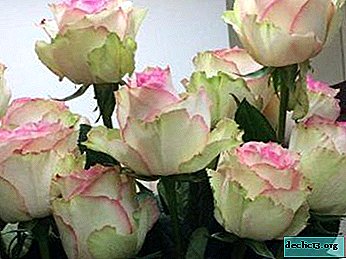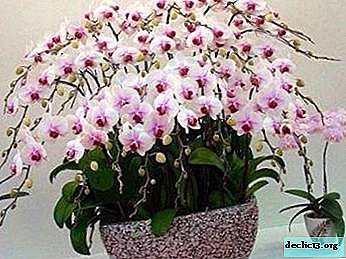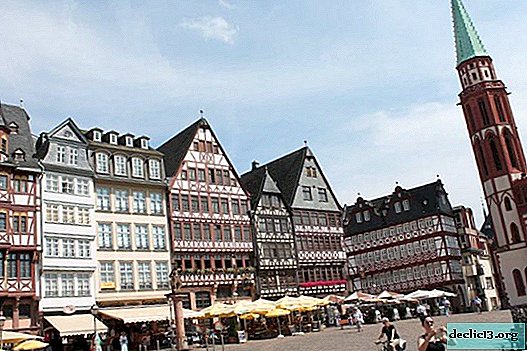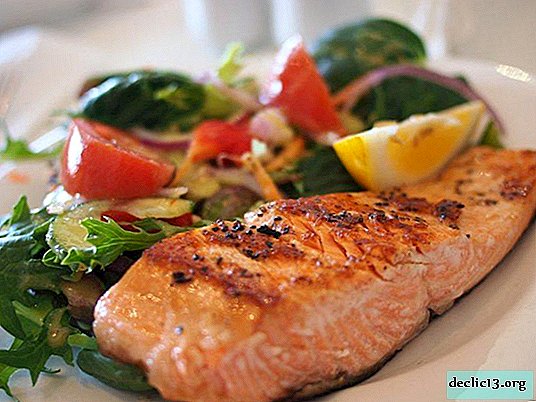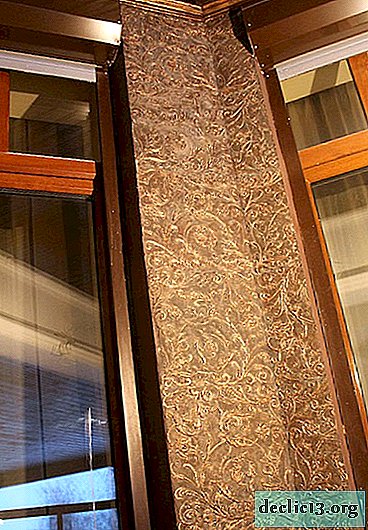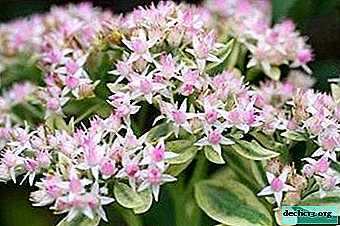Unpretentious beauty Hoya Crimson Queen: features of care and reproduction
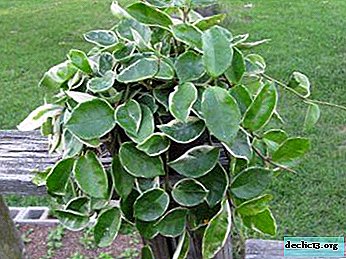
Hoya is often called “wax ivy” for its dense, smooth leaves. This variety is distinguished by multi-colored foliage, white, green and pink shades are found in color.
When choosing options for landscaping the interior, flower growers are guided, as a rule, by the harmlessness of the plant, its attractive appearance, pleasant aroma and ability, if necessary, to get along with neighbors in an impromptu garden. Krimson Queen Hoya meets all these requirements and is able to organically complement the interior of the house and the space of the office space. This article describes in detail the features of home care for a beautiful and unpretentious plant - Hoya Crimson Queen.
Botanical Description
Hoya Crimson Quinn - decorative creeper variety. The growth rate is fast - up to 40 cm per year. The stems are long, flexible. The leaves are variegated, glossy, waxy, about 7 cm in size. On the stem are placed close to each other. Color - dark green with pinkish spots and white trim. Inflorescences are numerous.
Collected from 20-25 small flowers, stars, pale pink color with a wine-burgundy middle. Flowering continues from June to October.
A flowering plant releases nectar, protruding on the flowers with transparent drops. It has an unobtrusive sweet aroma.Photo
Next, you can see the photo of the plant:




Breeding methods
Seeds
This method is non-standard, since hoya seeds are extremely rare on sale, and at home this seed plant does not produce at all.If you still managed to get them, then for sowing you will need soil with the addition of sphagnum.
The plus is that the seeds will germinate very quickly, but the sprouts will be extremely tender. Shoots will need careful control of humidity and light exposure. It will be possible to transplant the obtained sprouts only after three months, when the roots are strengthened and several pairs of leaves appear.
Leaf
This method of reproduction is not popular. Although the method is simple in the first stage, additional efforts and special knowledge in the second stage will be required. At the first stage, the leaf of the hoya is planted in a loose substrate.
It takes root very successfully, this will take several weeks. But further growth may not continue. In the second stage, to obtain a shoot, a growth cell stimulator must be applied to the base of the leaf.
Cuttings
The simplest and most popular breeding option is cuttings.. The shoot from which the stalk is taken must be older than a year. Choose a shoot fragment with two pairs of leaves. The lower ones are plucked off, and the stalk is placed in the soil so that the attachment points of the lower leaves are above it. Next, the handle must be well watered and, in order for rooting to succeed, make a polyethylene dome with openings for air.
For cutting, use only sterile instruments. Places of cuts can be sprinkled with charcoal powder. Soil and pot must also be sterile.Care
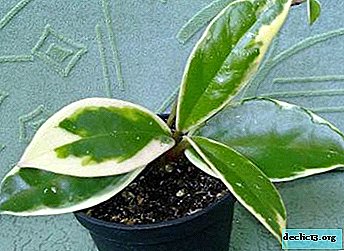 Temperature. In summer, the optimum temperature is 24 degrees, in winter - 10-15.
Temperature. In summer, the optimum temperature is 24 degrees, in winter - 10-15.The need to reduce temperature in winter is due to the dormant period of the plant, necessary for the restoration and laying of new peduncles. If you do not bet on abundant flowering, you can keep the plant year-round at room temperature.
- Watering. The plant is not demanding for watering. It is enough to water once every 1-2 weeks, avoiding the strong drying of an earthen coma. Strongly not allowed to overflow - the plant will die. You should also avoid getting water on the flowers, they will die and fall off.
- Shine. It is permissible to keep the hoya on the north side, but during flowering, the east is preferable. Very bright lighting does not fit the plant. Also, the proximity of heating devices in the autumn-winter period should be excluded.
- Pruning. Frequent pruning is not required. When the fourth leaf appears, a branch is nipped in young plants to form new shoots. Pruning can be done to maintain bush symmetry and stimulate abundant flowering. You should not remove dried flower stalks, new flowers will appear on them over time.
- Top dressing. During the growing season, the plant will well take fertilizing with mineral fertilizers. You can use liquid complex fertilizers for orchids. It is enough to feed once every two weeks, but only in the summer. In winter, top dressing should be excluded. Just planted or transplanted plant does not need top dressing for up to three months.
- Pot. Hoya roots grow rapidly, so it is advisable to transplant a young plant in a new pot every spring in the spring, 3-4 cm more than the previous one. In a large pot, with the comfort of the root system, the growth of shoots is actively stimulated in the plant. Hoya will bloom profusely in a slightly cramped pot. An adult plant is transplanted once every 3-4 years. The optimum diameter of the pot is 18-20 cm.
Disease
- The plant is susceptible to infection by the spider mite, which appears if the air in the room is too dry and hot.
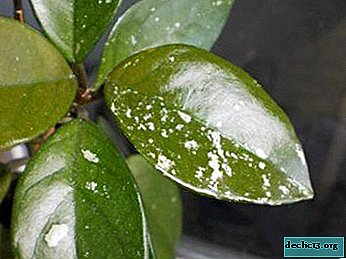 Symptoms are brown or whitish spots. Foliage turns yellow, dries, crumbles. The control method is humidification and insecticide treatment.
Symptoms are brown or whitish spots. Foliage turns yellow, dries, crumbles. The control method is humidification and insecticide treatment. - Infection with scabies appears as the appearance of fungus and cones on the stems and foliage. You can solve the problem with insecticides or by treating the plant with a soap or alcohol solution.
- Powdery mildew in the hoya, in the form of a whitish coating on the leaves and stems, is removed by insecticides in total with regular ventilation of the room and humidification of the air.
- The brown nematode, which affects the roots, stops the growth and development of the plant, is removed in the complex by washing the roots, transplanting into another sterile pot and spraying with insecticides.
Hoya Crimson Queen - Unique Tropical Flower. This is a wonderful case when a fancy tropical plant felt very comfortable in the conditions of our houses. Unpretentiousness combined with high decorative properties are the qualities that allowed this flower to firmly win the hearts of flower growers.

 Temperature. In summer, the optimum temperature is 24 degrees, in winter - 10-15.
Temperature. In summer, the optimum temperature is 24 degrees, in winter - 10-15. Symptoms are brown or whitish spots. Foliage turns yellow, dries, crumbles. The control method is humidification and insecticide treatment.
Symptoms are brown or whitish spots. Foliage turns yellow, dries, crumbles. The control method is humidification and insecticide treatment.
